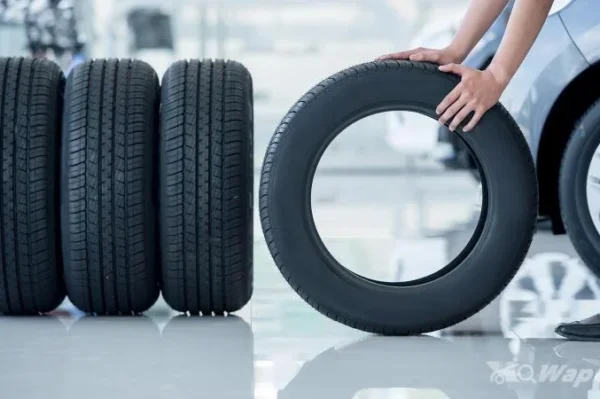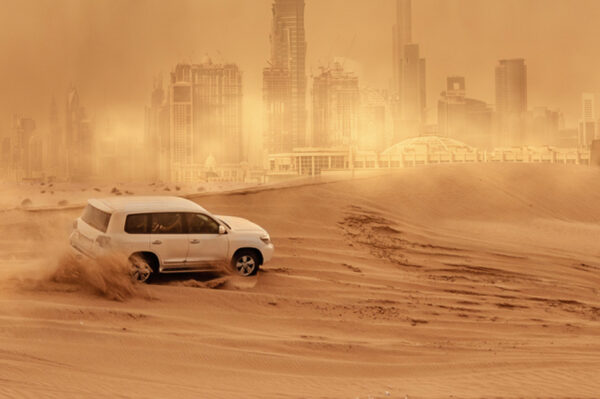
In regions like the United Arab Emirates (UAE), where hot weather dominates most of the year, vehicles face unique challenges. One critical aspect of vehicle maintenance often overlooked is tyre rotation. This simple yet essential practice ensures safety, efficiency, and longevity in a climate where road temperatures can soar above 50°C during summer.
This article explores why tyre rotation is indispensable for vehicles operating in such extreme conditions, delving into the science behind tyre wear, the impact of heat, and the benefits of regular maintenance.
Understanding Tyre Wear and Rotation
Tyre rotation is the practice of systematically changing the position of tyres on a vehicle to ensure even wear. Without regular rotation, certain tyres wear out faster, leading to compromised safety, reduced performance, and increased expenses. In any vehicle, tyres experience unequal wear due to factors such as:
· Weight Distribution. Front tyres bear more weight in front-engine vehicles due to the engine’s mass.
· Functionality. Front tyres handle steering and braking, leading to more friction and wear compared to rear tyres.
· Driving Habits. Frequent turns, sudden stops, and high-speed driving further contribute to uneven tyre degradation.
Impact of Hot Weather on Tyres
The UAE’s extreme climate amplifies the stress on tyres, making rotation even more critical. Key effects of hot weather include:
· Accelerated Tyre Wear. The intense heat causes tyre rubber to soften, making it more prone to wear and tear. Unevenly worn tyres become even more vulnerable, especially during high-speed driving on heated roads.
· Increased Risk of Blowouts. High temperatures increase tyre pressure due to air expansion, especially in tyres already weakened by uneven wear. This combination heightens the likelihood of tyre blowouts, a common hazard in the UAE’s summer months.
· Rapid Aging. Heat accelerates the breakdown of tyre materials, leading to cracks, bulges, and loss of structural integrity. Regular rotation minimizes localized stress, distributing wear evenly across all tyres and slowing down the aging process.
· Decreased Performance. Unevenly worn tyres reduce traction and handling capabilities, particularly on the smooth, high-speed highways typical of the UAE. This can compromise vehicle control, increasing the risk of accidents.
Why Tyre Rotation Matters in Hot Weather?
· Ensures Even Wear. Rotating tyres prevents certain tyres from bearing the brunt of the vehicle’s load and functionality. By redistributing the workload, all tyres wear evenly, maintaining their integrity and performance.
· Enhances Safety. Tyres in good condition are crucial for safe driving, especially in extreme weather. Even wear ensures balanced traction and grip, reducing the risk of accidents caused by skidding or tyre failure.
· Prolongs Tyre Life. By preventing premature wear on specific tyres, rotation extends the overall lifespan of the entire set. In a hot climate where tyre aging is already accelerated, this translates to significant cost savings.
· Improves Fuel Efficiency. Unevenly worn tyres increase rolling resistance, requiring the engine to work harder and consume more fuel. Regular tyre rotation ensures consistent performance, optimizing fuel efficiency even in harsh conditions.
· Supports Warranty Requirements. Many tyre manufacturers require regular rotation as part of warranty conditions. Neglecting this maintenance step can void warranties, leaving drivers responsible for full replacement costs in the event of premature wear or failure.
Recommended Tyre Rotation Patterns
In hot climates like the UAE, it’s advisable to rotate tyres every 10,000 to 12,000 kilometers or during every oil change, whichever comes first. Tyre rotation is not just a routine maintenance task but a necessity for vehicle safety and efficiency, especially in hot climates like the UAE.
The intense heat and demanding driving conditions amplify the importance of even tyre wear, making regular rotation critical. By ensuring balanced wear, improving performance, and extending tyre life, this simple practice offers significant economic, safety, and environmental benefits.
For effective rotation, it’s essential to follow the appropriate pattern based on the type of vehicle and its drivetrain.
- Front-Wheel Drive (FWD): Front tyres move to the rear on the same side, while rear tyres cross to the front.
- Rear-Wheel (RWD): Rear tyres move to the front on the same side, while front tyres cross to the rear.
- All-Wheel Drive (AWD): Tyres are swapped diagonally (front-left to rear-right and vice versa).
- Directional Tyres: These are rotated front to back on the same side to maintain their tread orientation.
Summary
For UAE drivers, prioritizing tyre rotation can mean the difference between a smooth, safe journey and unexpected breakdowns in extreme weather. Regular maintenance, combined with high-quality, heat-resistant tyres, ensures that vehicles remain reliable and roadworthy, even under the harshest conditions.
In the extreme heat of the UAE, regular tyre rotation is not just a good practice—it’s a necessity. Regularly rotating your tyres will ensure even wear. It will also improve handling, boost fuel efficiency, and extend tyre life. This simple task can prevent blowouts and save you money on tyres.
Visit a trusted tyre repair shop or a tyre shop in the UAE to keep your tyres in top condition during hot climate.



